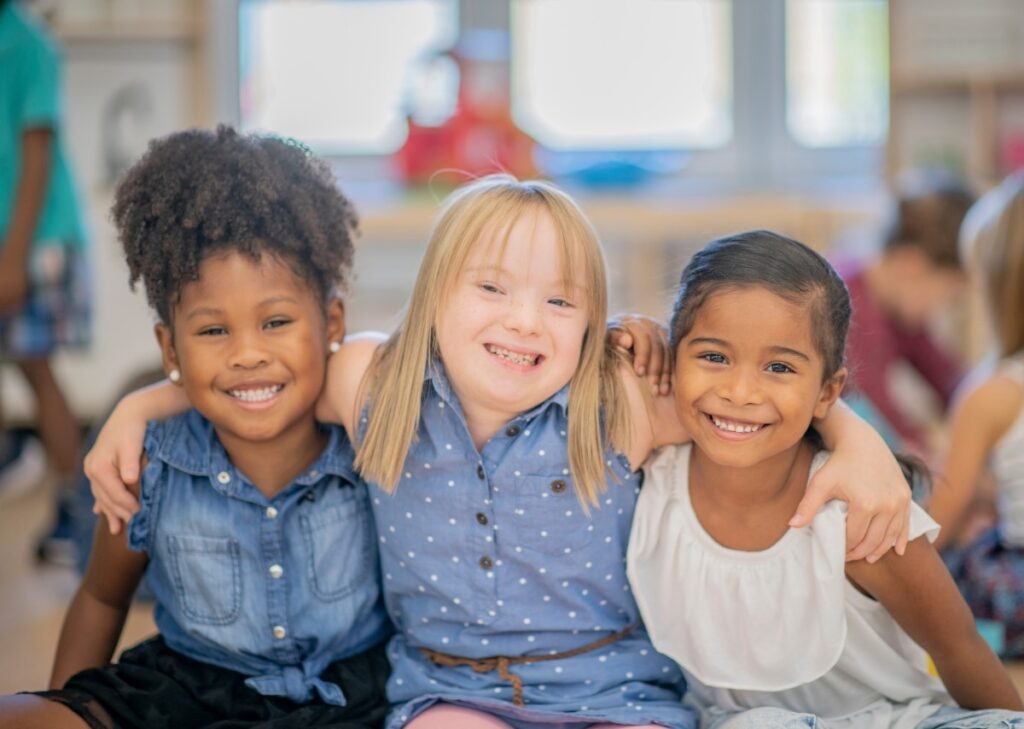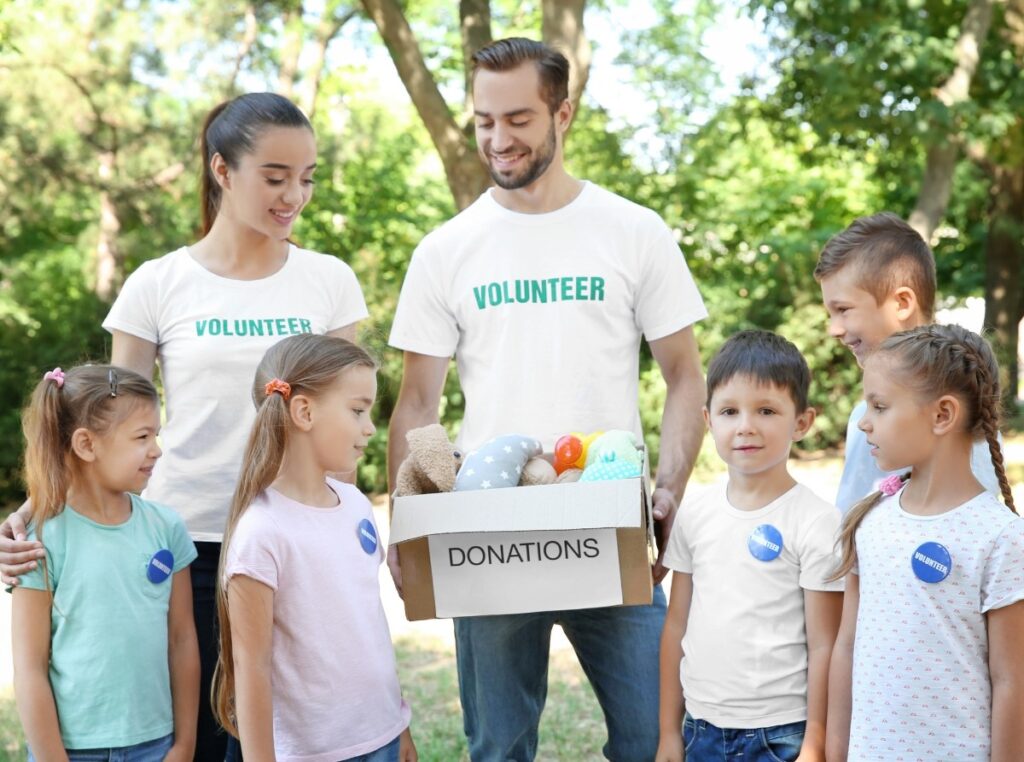Cultivating Empathy in the Classroom
In the tapestry of early childhood education, empathy stands out as a crucial thread, weaving together the social and emotional fabric of our classrooms. Cultivating empathy in young learners is not just about fostering a nurturing environment; it’s about equipping children with the ability to understand and share the feelings of others, a skill that is fundamental to their development as compassionate, well-rounded individuals.
Understanding Empathy in Early Learning
Empathy goes beyond mere sympathy; it involves stepping into someone else’s shoes, feeling with them, and understanding their perspective. In the context of a classroom, it’s the bridge that connects students to each other, fostering a sense of community and mutual respect.
The Role of Educators in Fostering Empathy
Educators are the architects of the classroom environment, playing a pivotal role in shaping the emotional climate. By modeling empathetic behavior, teachers can create a domino effect, inspiring students to follow suit. Here’s how educators can actively cultivate empathy in their classrooms:
- Practice Active Listening
Show students that their voices are heard and valued. Encourage them to express their thoughts and feelings, and respond with genuine interest and understanding. - Promote Perspective-Taking
Introduce activities that help children consider different viewpoints. Storytelling, for example, can be a powerful tool to explore diverse perspectives and emotions. - Create an Inclusive Environment
Ensure that every child feels seen and valued. Celebrate diversity and teach students to appreciate and respect differences. - Encourage Expressions of Kindness
Recognize and highlight acts of kindness in your classroom. Create opportunities for students to help and support each other. - Integrate Empathy into the Curriculum
Use lessons and activities that encourage students to explore their own emotions and those of others. This can include role-playing, group discussions, and art projects that express feelings. - Foster a Reflective Practice
Encourage students to reflect on their own and others’ emotions. Reflection can be facilitated through discussions, journals, or art, helping students process their feelings and develop a deeper understanding of empathy. - Collaborate with Families
Engage with families to promote empathy at home. Share strategies and insights so that empathy can be reinforced in different environments. - Utilize Storytelling and Role-Playing
These methods allow children to experience different perspectives and emotions, fostering a deeper understanding and connection with others. - Engage with the Community
Extend empathy beyond the classroom by involving students in community service or projects that help them connect with the broader society.
Practical Examples
How to Practice Active Listening
Imagine a young student, Emma, approaches you during free play, looking upset. She begins to tell you about a disagreement she had with another student over a toy.
- Get Down to Their Level
Physically lower yourself to Emma’s height. This nonverbal action shows that you are fully engaged and ready to listen. - Maintain Eye Contact
Make gentle eye contact with Emma, signaling that your attention is focused on her. - Listen Without Interrupting
Allow Emma to express her feelings and narrate the incident without interruptions. Resist the urge to offer immediate solutions or judgments. - Reflect Back What You Hear
Once Emma finishes her story, summarize what she said to confirm your understanding. For instance, “It sounds like you were really upset when the toy was taken away. Is that right?” - Acknowledge Her Feelings
Validate her emotions by acknowledging them. You might say, “I can see why that made you feel sad,” showing empathy for her situation. - Ask Open-Ended Questions
Encourage her to express more about her feelings and thoughts on the situation. Ask questions like, “What do you wish would have happened instead?” - Encourage Sharing Solutions
Once Emma feels heard and understood, guide her toward thinking about solutions or ways to address the situation, fostering problem-solving and empathy for the other student involved.
By practicing active listening in this manner, you not only make Emma feel valued and understood but also model for the entire class how to listen empathetically to others, laying the groundwork for a more empathetic and cohesive classroom environment.

How to Promote Perspective-Taking
Two children, Lucas and Mia, are having a conflict because Lucas took Mia’s crayons without asking, and Mia is visibly upset about it.
- Identify the Emotion
Start by helping Lucas recognize Mia’s feelings. You might say, “Look at Mia’s face, Lucas. She seems upset. Can you guess why she might feel this way?” - Encourage Lucas to Express His Observations
Ask Lucas to describe what he sees in Mia’s expressions and actions. This encourages him to pay attention to nonverbal cues. - Role Reversal
Invite Lucas to imagine how he would feel if someone took his crayons without asking. You could say, “How would you feel if your crayons were taken by someone else without your permission?” - Use Storytelling
Share a short story or anecdote where a character experiences a similar situation and feels upset. Ask Lucas how he thinks the character feels and why, linking it back to the current situation with Mia. - Discuss Consequences
Talk about how Mia’s day might be affected by not having her crayons. Ask Lucas, “How do you think Mia’s day will be now that she doesn’t have her crayons to draw with?” - Encourage Empathy
Guide Lucas to think about ways he can make the situation better. Ask, “What do you think you can do to help Mia feel better?” This encourages him to consider Mia’s perspective and feelings. - Facilitate Apology and Resolution
Encourage Lucas to apologize to Mia and discuss ways they can share the crayons or what he can do next time he wants to use something that belongs to someone else.
By engaging in these steps, you’re helping Lucas develop the ability to understand and consider others’ feelings and perspectives, which is a critical component of empathy. This not only resolves the immediate conflict but also fosters a more empathetic and understanding atmosphere in the classroom.
How to Create an Inclusive Environment
Let’s say in your classroom, you have children from various cultural backgrounds, and you notice that some children are not engaging with others who are different from them.
- Celebrate Diversity
Introduce activities that celebrate different cultures, languages, and traditions. For example, you can have a “Culture Day” where each child shares something unique about their background or a story from their culture. - Inclusive Storytime
Choose books that include a diverse range of characters and stories, showing different ways of living and thinking. Discuss these stories and how everyone’s life is unique yet important. - Group Collaborations
Design group activities that require collaboration among children from different backgrounds. Ensure that teams are mixed, allowing children to work with peers they might not usually interact with. - Encourage Dialogue
Create an open environment where children are encouraged to share about their lives, interests, and backgrounds. Use circle time to allow each child to talk about their family, hobbies, or a favorite tradition. - Model Inclusive Behavior
Be a role model for inclusivity. Show respect and appreciation for different cultures and backgrounds in your interactions. Your behavior sets a standard for students to emulate. - Address Exclusion
If you notice any child being excluded or marginalized, intervene gently but firmly. Facilitate discussions about feelings and how exclusion can hurt others, promoting empathy and understanding. - Empathy Exercises
Engage children in exercises that promote empathy, such as imagining how another person feels or discussing how to be a good friend to someone who is different from them. - Environment and Materials
Ensure your classroom materials reflect diversity, including toys, books, and decorations that represent various cultures and lifestyles. - Parental Involvement
Encourage parents to participate in sharing their cultures and traditions with the class. This can be through storytelling, art, cooking, or any other activity that represents their heritage.
By actively promoting an inclusive environment, you’re not just teaching children to be empathetic towards one another; you’re also building a classroom culture that values diversity and mutual respect. This approach not only enriches the learning experience but also prepares children to thrive in a diverse world.

How to Encourage Expressions of Kindness
You want to instill a culture of kindness in your classroom, where children actively recognize and participate in kind acts towards each other. You can do the following:
- Kindness Board
Create a kindness board in the classroom where children can post notes or drawings when they observe acts of kindness or when they do something kind themselves. This visible recognition encourages more kind behaviors. - Role-Playing
Use role-playing games to act out scenarios where one child helps or supports another. Discuss how the acts of kindness make the characters feel, reinforcing the emotional rewards of kind behavior. - Kindness Jar
Introduce a kindness jar where children can drop a marble or a token every time they do something kind or notice kindness in the classroom. When the jar is full, celebrate with a special activity, reinforcing the idea that collective kindness leads to shared rewards. - Storytime with a Focus on Kindness
Select books that emphasize kindness and discuss the kind actions of characters and their positive outcomes. Encourage children to share how they might show kindness in similar situations. - Compliment Circles
Implement a routine where children sit in a circle, and each child offers a compliment or a kind word to another child. This practice encourages positive interactions and helps build a supportive classroom atmosphere. - Encourage Empathy in Conflict Resolution
When conflicts arise, guide children to resolve them with kindness. Facilitate discussions that help children understand each other’s feelings and find kind ways to address disputes. - Model Kind Behavior
Children learn by example, so consistently demonstrate kindness in your interactions with them and others. Your actions teach students how to treat people with consideration and compassion. - Random Acts of Kindness
Plan activities where children can engage in random acts of kindness, like making cards for a local nursing home or creating small gifts for another class. Discuss how these actions make them feel and the potential impact on the recipients. - Thank and Appreciate
Regularly express gratitude and appreciation in the classroom, encouraging children to do the same. This creates an environment where kindness is valued and expressed freely.
By incorporating these strategies, you’re not just encouraging random acts of kindness; you’re fostering a classroom culture where empathy, consideration, and mutual respect are ingrained in everyday interactions. This nurturing environment not only benefits individual children but also cultivates a sense of community and interconnectedness in the classroom.
You’re aiming to enhance your own empathetic responses to children’s behavior and emotions, setting a reflective example that encourages children to consider their own reactions and feelings.
How to Reflect on Your Responses
You can enhance your own empathetic responses to children’s behavior and emotions with the following actions:
- Journaling
Keep a reflective journal where you note down significant interactions with students, especially those that involve emotional exchanges. Reflect on how you responded, what you felt, and how the child reacted to your approach. - Self-Questioning
After a notable interaction, ask yourself questions like, “Did my response acknowledge the child’s feelings?” “Could I have been more empathetic?” “What might the child have felt during our exchange?” - Seek Feedback
Occasionally, ask colleagues to observe your interactions with students and provide feedback on your empathetic responses. External perspectives can offer valuable insights into your relational dynamics with students. - Role Modeling
Share your reflective practices with the children. For example, after resolving a conflict, you might say, “I thought about how I spoke to you earlier, and I wonder if I could have been more understanding. How did you feel about it?” This demonstrates that reflection is a valuable tool for everyone. - Professional Development
Engage in professional development opportunities focused on emotional intelligence and empathy. Learning new strategies and insights can enhance your reflective practices and, consequently, your empathetic responses. - Mindfulness and Emotional Awareness
Practice mindfulness to become more aware of your emotions and responses in real-time. This awareness can help you choose more empathetic reactions in the moment and reflect more insightfully afterward. - Peer Discussions
Regularly discuss scenarios and responses with peers, creating a community of practice. These discussions can offer new strategies for empathy and reflection, providing a broader array of responses to consider in future interactions. - Continuous Improvement
Set personal goals for improving your empathetic responses based on your reflections. Recognize progress and set new targets, treating empathy as a skill that can always be enhanced. - Response Planning
When you anticipate challenging interactions, plan your potential responses. After the interaction, reflect on your execution and its effectiveness, considering any adjustments for future situations.
By integrating these reflective practices into your routine, you not only enhance your ability to respond empathetically but also model a process of continuous emotional learning for your students. This approach not only benefits the immediate classroom dynamics but also contributes to a broader culture of empathy and understanding, essential for nurturing compassionate individuals.

How to Collaborate with Families
You want to extend the practice of empathy beyond the classroom by involving families, ensuring that the values of empathy and understanding are reinforced at home and in school.
- Parent Workshops
Organize workshops or information sessions for parents that focus on the importance of empathy in child development. Offer strategies and activities they can use at home to reinforce these values. - Communication Channels
Establish regular communication channels with families, such as newsletters, emails, or a class blog, where you share insights on the classroom’s empathy-focused activities and offer tips for fostering empathy at home. - Family Involvement Days
Host events where families can participate in classroom activities centered on empathy. For instance, families could join in on a storytelling session that emphasizes understanding and perspective-taking. - Empathy at Home Challenges
Create simple, fun challenges or activities that children and their families can do together at home to practice empathy, like writing thank-you notes to community helpers or sharing stories about acts of kindness. - Resource Sharing
Provide families with a list of books, games, and other resources that promote empathy and understanding, encouraging them to continue the conversation and practice at home. - Feedback and Insights
Encourage families to share their observations and experiences regarding their child’s empathetic behaviors at home. This can provide valuable insights and opportunities for reinforcing these behaviors in the classroom. - Parent-Teacher Conferences
Utilize parent-teacher conferences to discuss the child’s progress in developing empathy and to strategize collaboratively on ways to support their growth in this area. - Family Story Sharing
Invite family members to share stories from their own cultures or experiences that highlight empathy, helping children see the value of understanding and compassion in diverse contexts. - Modeling Empathy
Demonstrate empathetic interactions with families themselves. Showing understanding and compassion in your communications and interactions with parents sets a powerful example for students.
By actively engaging families in the process of cultivating empathy, you create a supportive network that surrounds the child with consistent messages about the importance of understanding and caring for others. This partnership between home and school reinforces the development of empathetic children who are prepared to engage with the world around them with compassion and insight.
How to Utilize Storytelling and Role-Playing
You’re looking to use storytelling and role-playing as dynamic and interactive methods to teach empathy, allowing children to explore emotions, perspectives, and social situations in a controlled, imaginative environment.
- Emotion-Focused Stories
Select or create stories that delve into characters’ emotions and perspectives. After reading, engage the children in discussions about how the characters might feel and why, encouraging them to articulate and understand diverse emotional experiences. - Character Role-Playing
After storytelling, assign roles to the children to act out scenes from the story. Encourage them to express their character’s feelings and viewpoints, helping them to step into someone else’s shoes and experience different perspectives. - Problem-Solving Scenarios
Use role-playing to act out common social situations or conflicts that arise in the classroom. Guide the children to explore various solutions and understand the impact of their actions on others, fostering empathy and critical thinking. - Empathy Circles
After a storytelling session, organize empathy circles where children discuss how they would feel in the character’s situation and share personal experiences that relate to the story, promoting a deeper connection and understanding. - Puppet Shows
Utilize puppets to tell stories or create scenarios that highlight empathetic behavior. Children can engage with the puppets to explore and express emotions, making empathy learning more tangible and relatable. - Diverse Narratives
Incorporate stories from various cultures and perspectives to broaden children’s understanding of different life experiences and viewpoints, fostering a global sense of empathy. - Emotion Guessing Games
After a role-play session, have children guess how their peers felt while playing their roles, encouraging them to pay attention to nonverbal cues and vocal tones that convey emotions. - Story Creation
Encourage children to create their own stories or plays that include elements of empathy, collaboration, and perspective-taking, allowing them to apply their understanding creatively.
By integrating storytelling and role-playing into your teaching practices, you provide children with the opportunity to explore and understand emotions and perspectives in a creative and engaging way. This not only enhances their empathetic skills but also encourages a love for stories and play, enriching their learning experience holistically.
How to Engage with the Community
You aim to extend the children’s understanding of empathy by connecting with the broader community, helping them recognize and respond to the feelings and needs of others outside their immediate environment.
- Community Helpers Day
Invite community helpers, like firefighters, nurses, or police officers, to share their experiences and discuss how they help others. This can broaden children’s understanding of empathy in various contexts. - Neighborhood Walks
Take children on walks around the neighborhood or to a local park, encouraging them to observe and discuss how people interact, help each other, and live together, fostering a sense of community empathy. - Service Projects
Organize simple, age-appropriate community service projects, such as making cards for a local nursing home or collecting canned goods for a food bank. Discuss the impact of these actions on the community to foster empathy. - Cultural Exchange
Connect with a classroom in a different part of the world or from a different cultural background. Share stories, art, and letters to learn about and empathize with the lives of others who have different experiences. - Community Guest Storytellers
Invite community members to share stories about their lives, work, or cultural traditions. This can help children understand and empathize with diverse perspectives and experiences. - Local History Exploration
Learn about the history of the local community, including the people and events that have shaped it. Understanding history can foster empathy for the experiences of those who lived in different times or circumstances. - Community Art Projects
Engage in art projects that reflect the community or address community issues, allowing children to express empathy and understanding through creative means. - Environmental Stewardship
Involve children in local environmental efforts, like a park clean-up or a plant-a-tree day, to foster empathy for the planet and an understanding of how our actions affect the community and environment. - Empathy Reflections
After community engagement activities, hold discussions or reflection sessions where children can express what they learned and how they felt about the experiences, reinforcing the empathetic connections they made.
By engaging children with the community, you not only expand their understanding and practice of empathy but also instill a sense of connection and responsibility to the world around them. These experiences can profoundly impact their development, cultivating a generation of empathetic and community-minded individuals.

The Impact of Empathy
The benefits of cultivating empathy in education are profound. Empathetic children are more likely to excel in social interactions, resolve conflicts peacefully, and show compassion and understanding towards others. Furthermore, empathy lays the foundation for developing other critical social-emotional skills, such as cooperation and problem-solving.
Final Thoughts
As educators, our mission extends beyond academic instruction; we are tasked with nurturing the heart as well as the mind. By prioritizing empathy in our classrooms, we not only enhance the learning experience for our students but also contribute to a more compassionate, understanding world. Let’s embrace the role of empathy in education, recognizing its power to transform our classrooms, our students, and, ultimately, our society.

Elevate your teaching skills and stay ahead of the curve! Receive our monthly Insights, packed with professional development opportunities, classroom inspiration, and the latest trends in education. Don’t miss out on the chance to take your teaching to the next level. Subscribe now!







